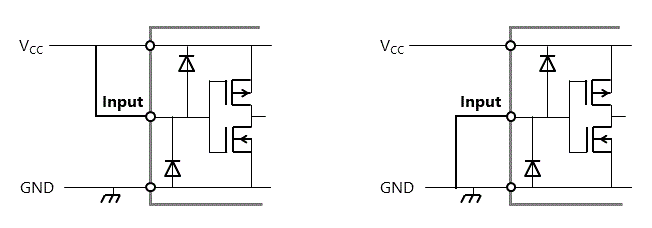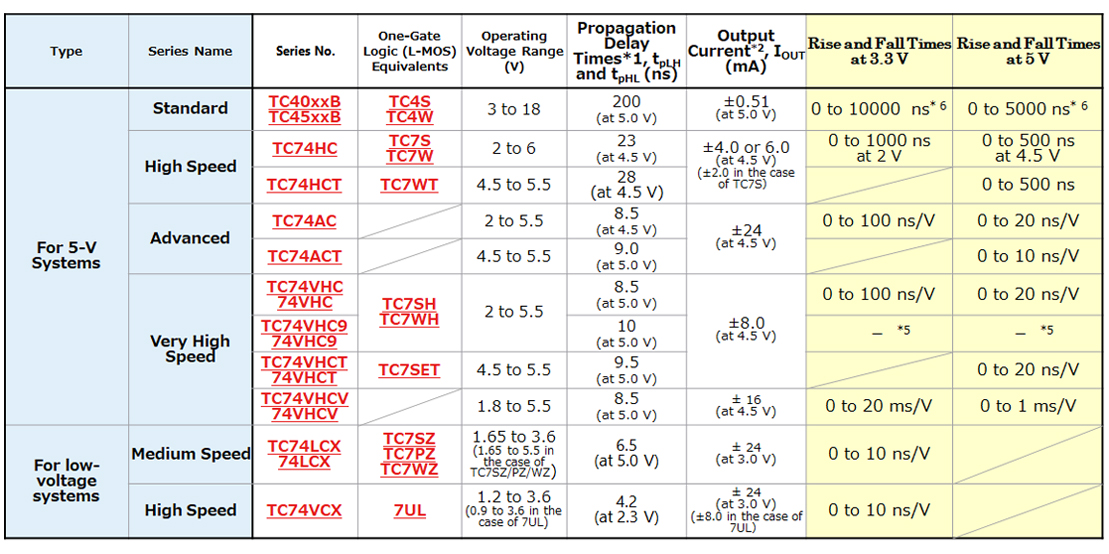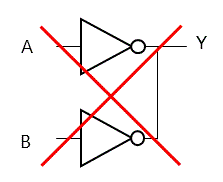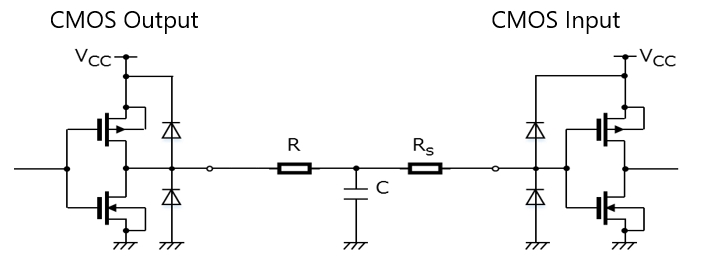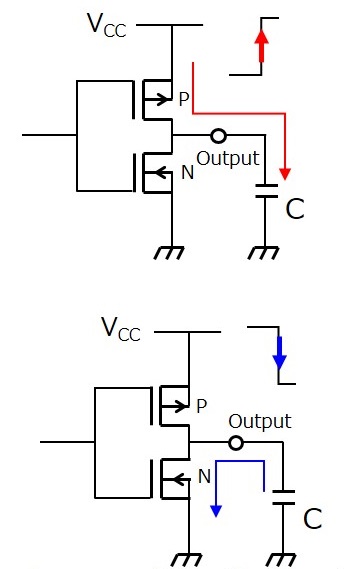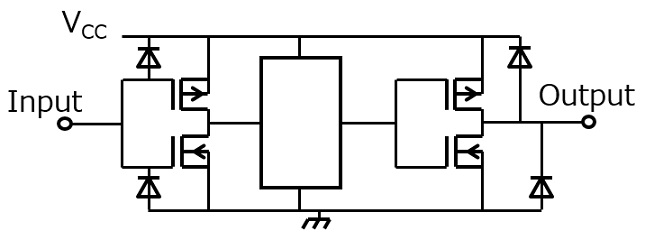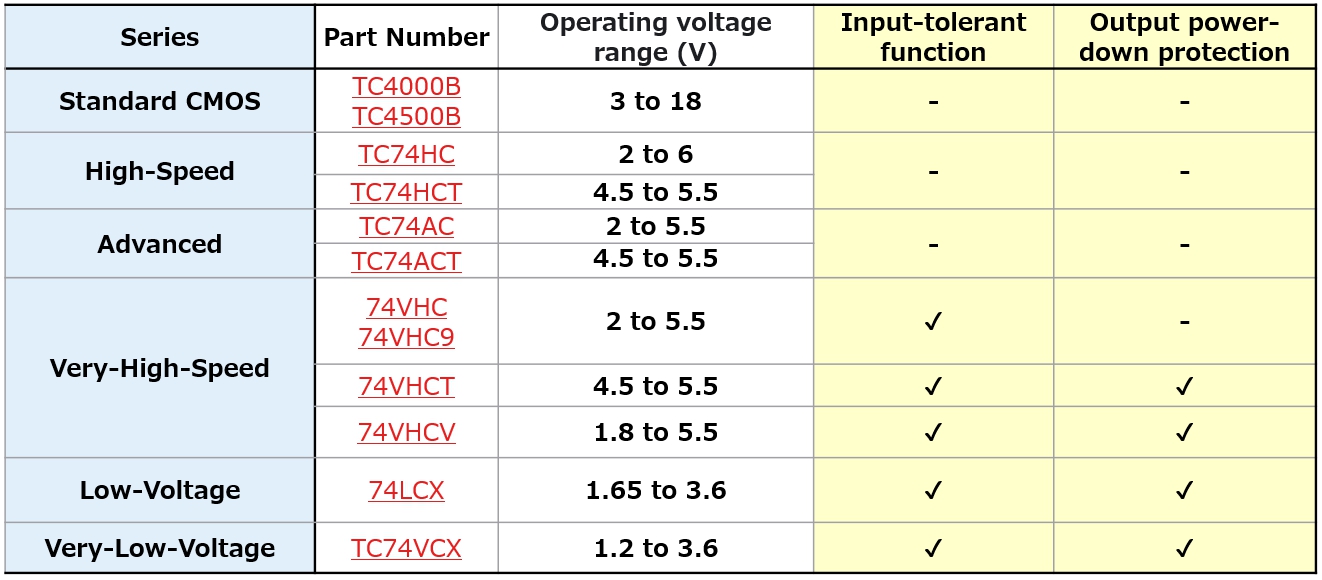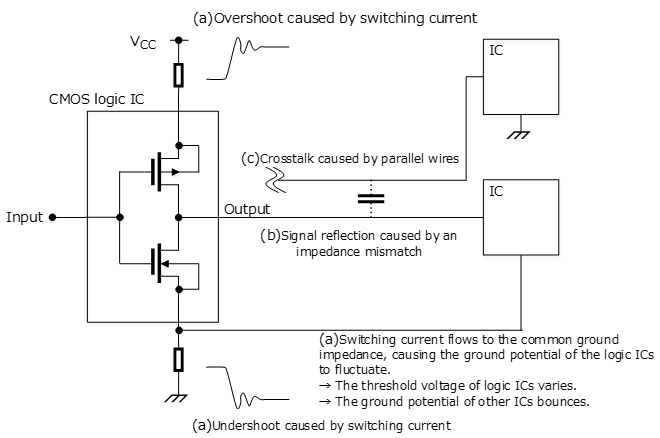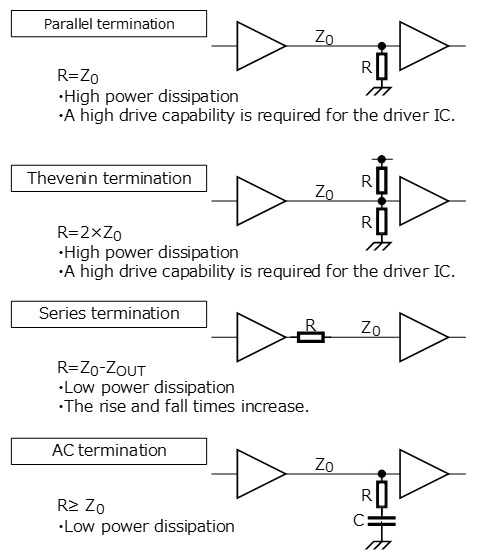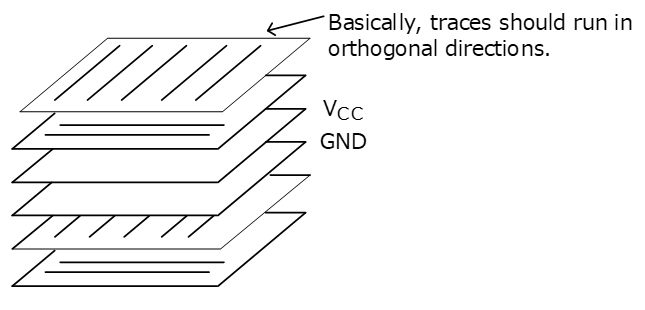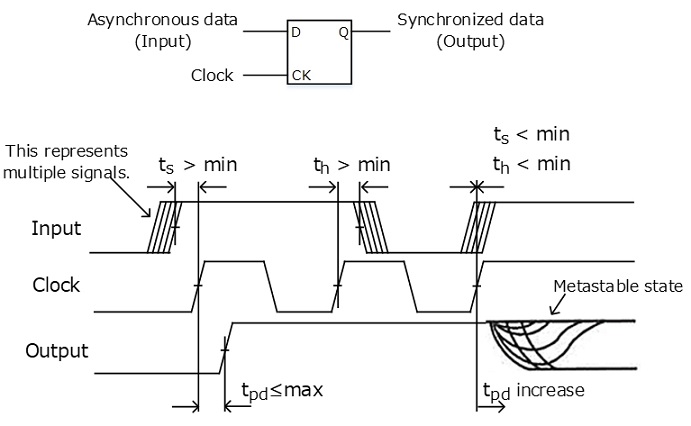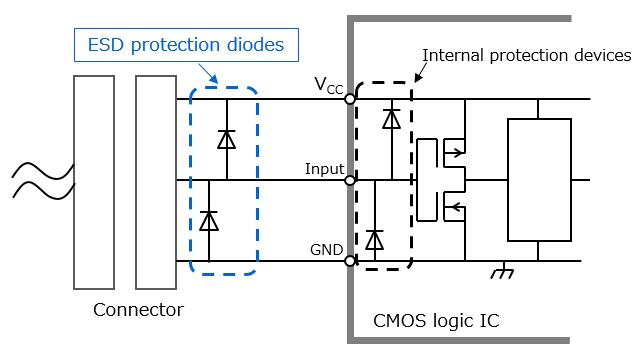Countermeasures for Hazards

In the case of multiple-input combinational logic consisting of OR, AND and other gates, a slight difference in the timing of input signal changes causes a brief whisker-like pulse called a hazard.
Using the circuit shown in below figure, let’s see how a hazard occurs because of a difference in signal delays. Suppose that a rising signal transition occurs simultaneously at A and B. The signal applied to B reaches the AND gate via an inverter. Since the signal that enters the AND gate from B is delayed by an inverter, the AND gate receives input signals A and C at different timings, potentially producing a High pulse at the Y output.
Countermeasures for hazards
combinational logic should not be designed to produce a desired output value from simultaneous changes in its inputs. Using a flip-flop to adjust the output timing also helps eliminate a hazard.
In addition to a signal timing difference, a slowly changing input can be a cause of a hazard.
Hazards due to a slowly changing input can be prevented by using a logic gate with a Schmitt-trigger input.
Usage Considerations of CMOS Logic ICs
Products
Related information
- Application Notes
- FAQ


